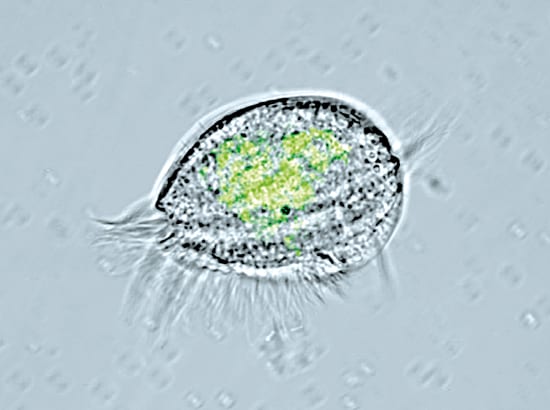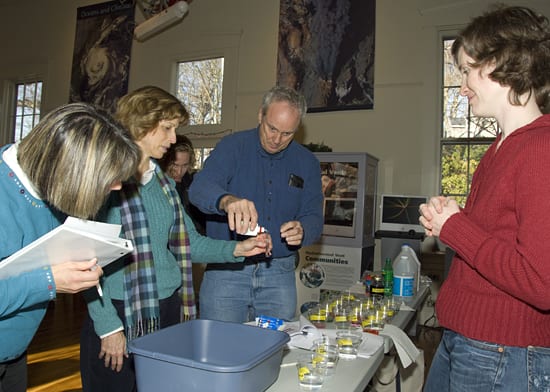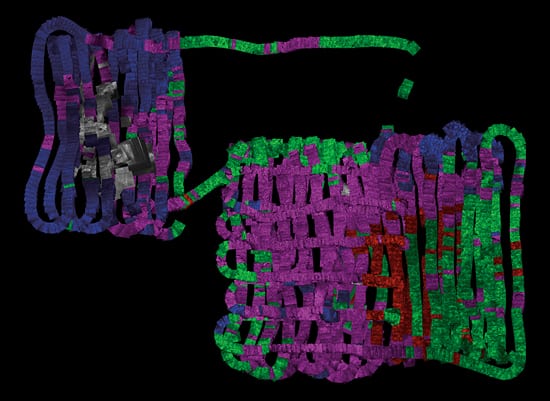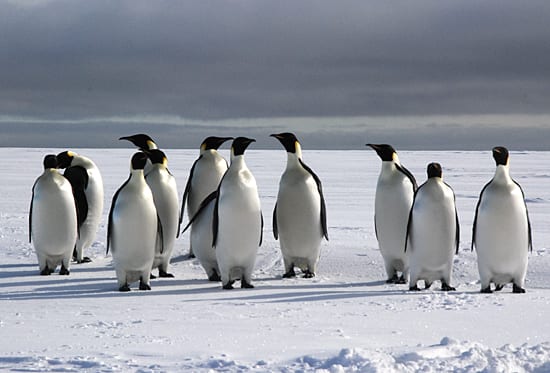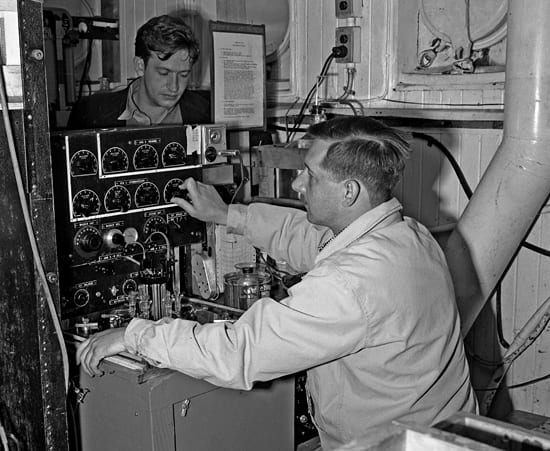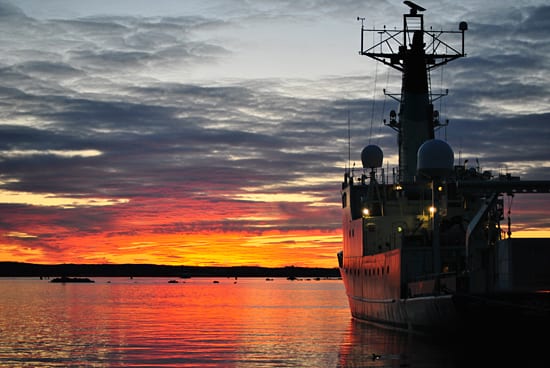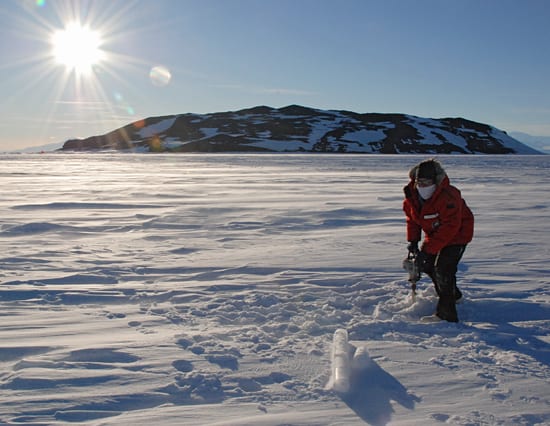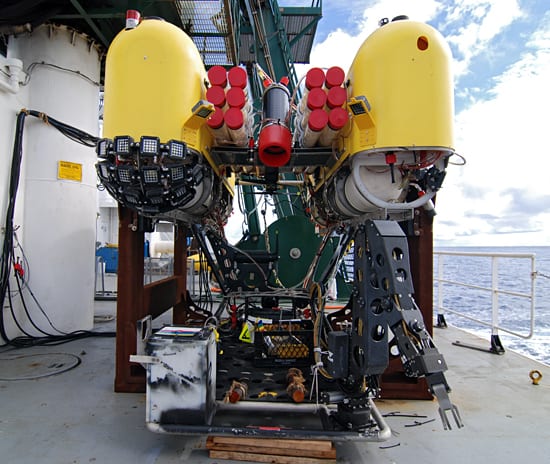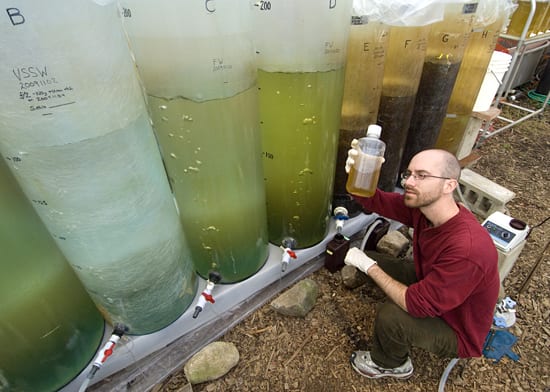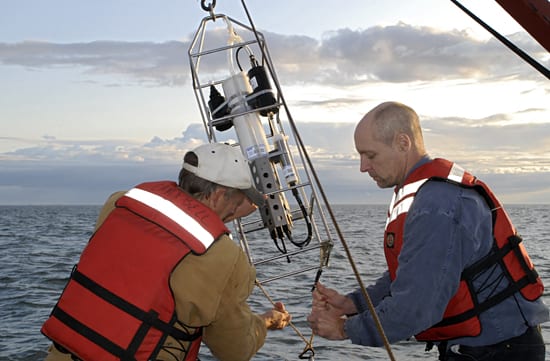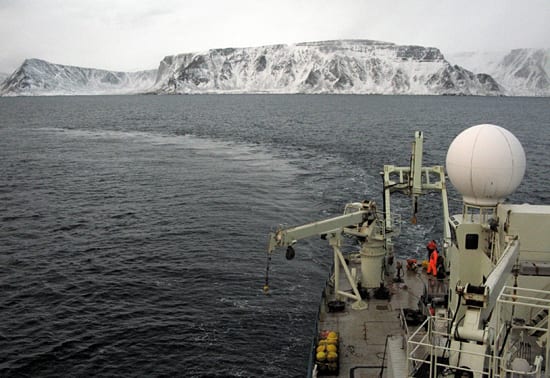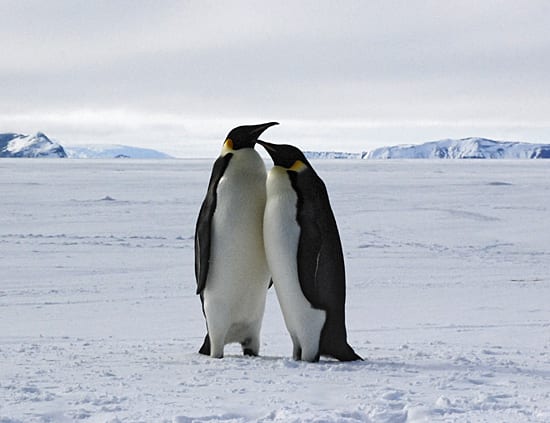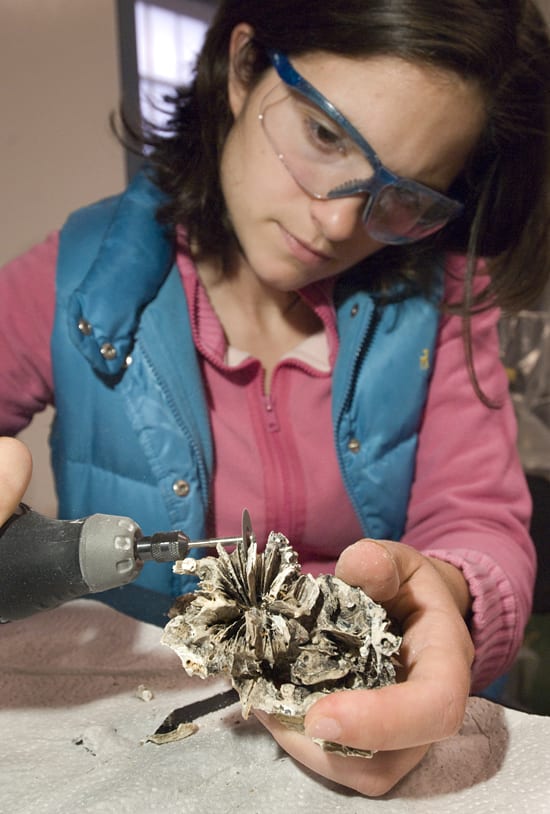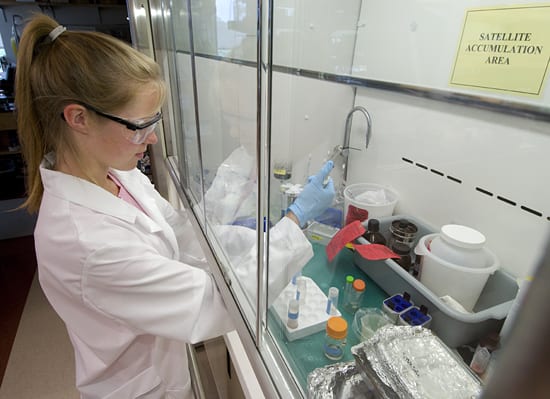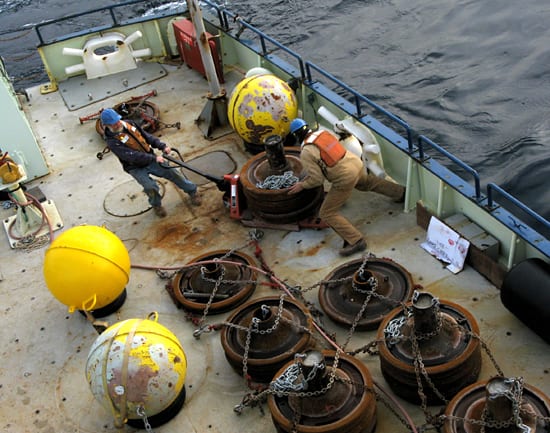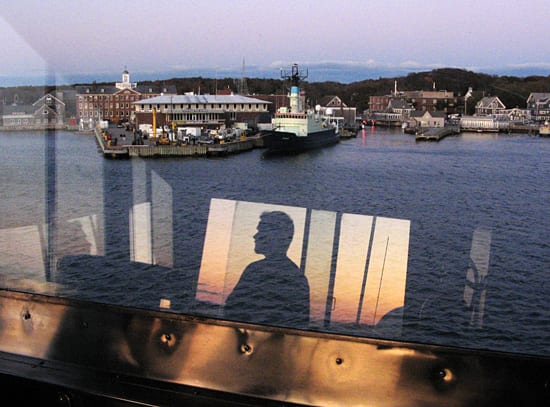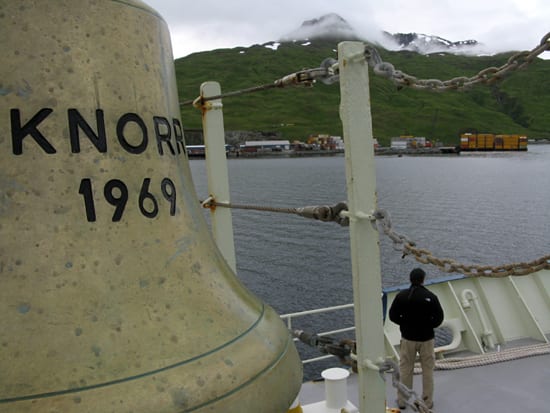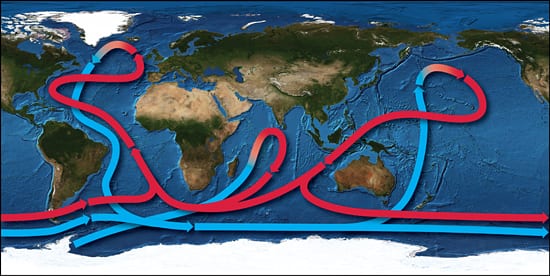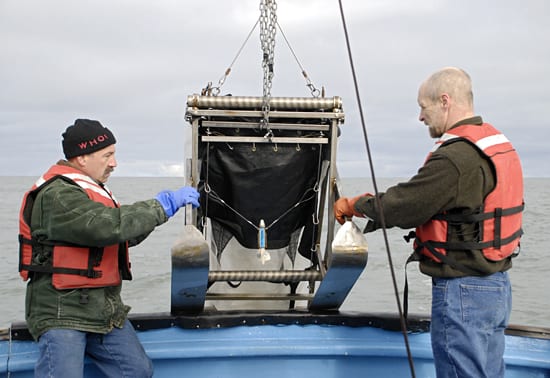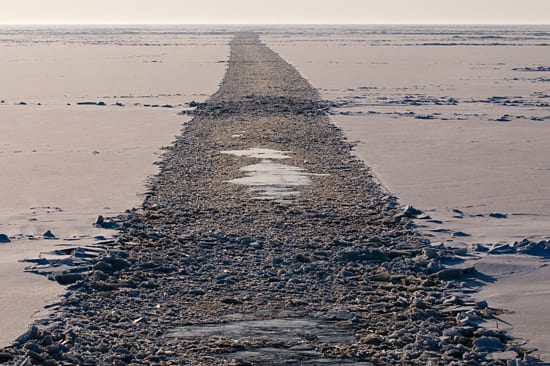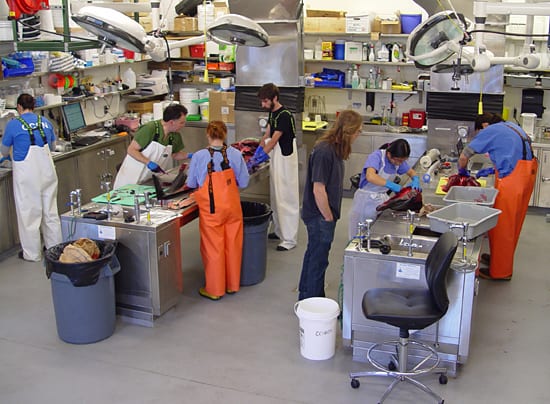Multimedia Items
Trojan horses
A single-celled organism has eaten bacteria, which are easily visible because they were treated with green dye. Some bacteria can live within organisms, waiting to be released back into the…
Read MoreRigging up
Photographer Dave Owen rigging up his camera system on deck of Atlantis. Owen conducted extensive deep-sea camera operations on many expeditions, including three cruises between 1972 and 1974 near the…
Read MoreExploring ocean acidification
Postdoctoral Investigator Sarah Cooley (right), of the Marine Chemistry & Geochemistry department, leads a group of teachers through a classroom laboratory exercise exploring ocean acidification and its effects on marine…
Read MoreMowing the lawn
The WHOI-operated deep-sea vehicle ABE systematically tracked over the seafloor on the volcanic Mid-Atlantic Ridge, midway between Africa and South America, photographing the ocean bottom. Some 3,000 overlapping photos were…
Read MoreChanging landscape
Emperor penguins, which delighted audiences of the Academy Award-winning documentary March of the Penguins, could be sliding on the path toward extinction—the victims of climate change, according to a study…
Read MorePlease pass the saline
The principal developers of the salinometer —Karl Schleicher, right, and Alvin Bradshaw— are at work with their first model, in the mid-1950s, in the main lab of the research vessel…
Read MoreInto the sunset
A beautiful, winter sunset casts an amber glow on the R/V Oceanus docked at the WHOI pier in January 2010. Oceanus is the North Atlantic workhorse of the WHOI-UNOLS fleet,…
Read MoreIce drilling
Over the past two years, WHOI marine biogeochemist Mak Saito and his colleagues at J.C. Venter Institute have been studying life at the bottom of the food chain in Antarctica.…
Read MoreAnalyzing ancient sediments
Research Assistant Skye Moret-Ferguson of the Geology & Geophysics department prepares a core for analysis in the X-ray fluorescence (XRF) core scanner. The scanner, which produces nondestructive, high-resolution elemental analysis,…
Read MoreDeep diver
The new deep-sea vehicle Nereus successfully reached the deepest part of the ocean — the Mariana Trench in the western Pacific Ocean— on May 31, 2009. First conceived in 2000…
Read MoreGrowing marine algae
In experimental tanks at WHOI, guest student Tyler Goepfert grows different species of marine algae to test which might be best suited for harvesting and converting into biofuels. Goepfert is…
Read MoreBowhead hotspot
Stephen R. Okkonen of the Institute of Marine Science at the University of Alaska Fairbanks and Guest Investigator Robert Campbell from the University of Rhode Island deploy a conductivity/temperature/depth (CTD)…
Read MoreSteaming away
The R/V Knorr steams away from the coast of Cape Dyer, Baffin Island—the largest island in Canada—in October 2009. The ship was in the area to recover a series of…
Read MoreLife on (and under) the ice
WHOI marine biogeochemist Mak Saito snapped this image of two Emperor penguins while working in Antarctica in November 2009. Over the past two years, Saito and his colleagues have shared…
Read MoreDating corals
MIT/WHOI Joint Program Student Andrea Burke of the Geology & Geophysics department cuts pieces of a deep-sea coral (Desmophyllum dianthus) collected from about 1000 meters depth in the Drake Passage.…
Read MoreExtracting DNA
Summer Student Fellow Erica Hildebrand of Connecticut College spent her summer working with WHOI biologist Stefan Sievert on a project to assess the microbial community composition of five distinct low-temperature…
Read MoreAnchors away
R/V Knorr bosun Pete Liarikos and University of Washington engineer Eric Boget move a mooring anchor into position for deployment as part of the Arctic Gateways program. The anchors, which…
Read MoreA barnacle’s life
For his graduate research, WHOI postdoctoral investigator Jonathan Blythe studied the intertidal barnacle Semibalanus balanoides at Gardiner Beach in Woods Hole. He focused on the transition between the larval and…
Read MoreHome again
Able-Bodied Seaman Mike Singleton (in silhouette) on board the R/V Knorr keeps lookout as Captain Kent Sheasley prepares to dock the ship at the WHOI pier following a month of…
Read MoreTake the chill off
Leaving the chilly coast of Dutch Harbor, Alaska, the R/V Knorr heads for the warmer waters of Hawaii in July 2009. Built in 1969 and delivered to Woods Hole the…
Read MoreThe Great Ocean Conveyor
In the North Atlantic Ocean in winter, the contrast between frigid, dry winter air and warm water draws heat from the ocean into the atmosphere and leaves ocean water colder…
Read MoreTrawling for krill clues
WHOI Researcher Philip Alatalo, left, and Guest Investigator Robert Campbell from the University of Rhode Island deploy a Tucker Trawl in an effort to catch krill during a recent cruise…
Read MoreOn the straight and narrow
With a wake of broken ice straight behind the ship, the U.S. Coast Guard Cutter Healy heads home after a 38-day expedition to study how climate change is affecting the…
Read MoreA day in the life of a lab
In this Dec. 17 snapshot of activity in the Marine Research Facility Necropsy Lab, researchers investigate the body of a common dolphin that died the day before in Harwich. The animal…
Read More
